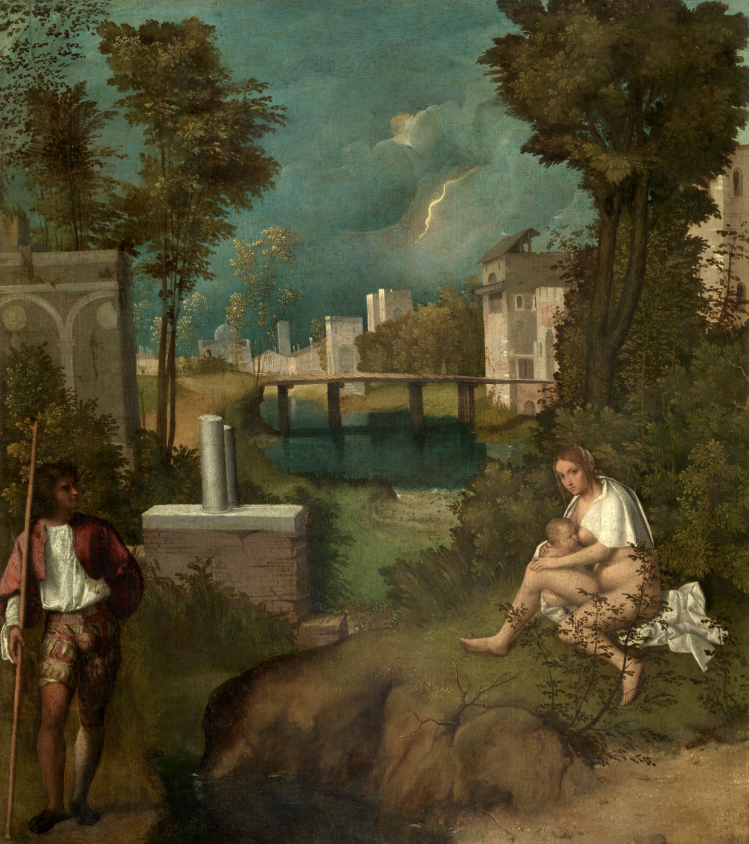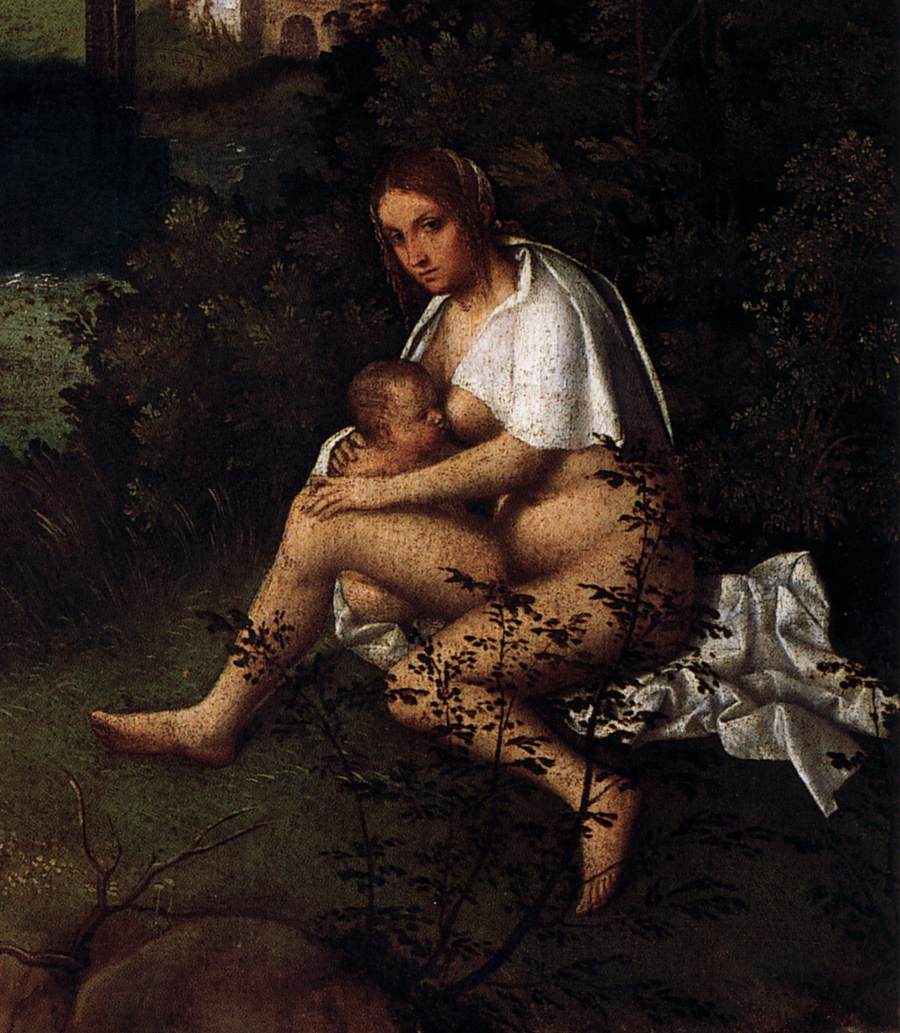The Enigma of Giorgione’s Tempest

Giorgione’s The Tempest is a painting famous for its many mysteries.
It is a mystery who commissioned the work and the exact year it was painted, we do not know what message the painting conceals and what meaning the many symbolic elements scattered across the canvas have. The place for which the painting was intended is also mysterious.
The only certainty is that it is a truly extraordinary work of art that represents one of the masterpieces of the Italian Renaissance. Painted at the beginning of the 16th century, Giorgione’s Tempest is characterised by a perfect composition and is today exhibited at the Gallerie dell’Accademia in Venice.
The enigma of Giorgione’s Tempest

DESCRIPTION OF GIORGIONE’S STORM
The work presents an apparently simple scene: a man and a woman are positioned within a natural landscape, beneath an impending storm. The woman is sitting while breastfeeding a child, while the man seems to have stopped to rest and is leaning on the spear he is carrying.
It is not clear exactly what is happening in the scene, but it appears that the characters are seeking refuge from a storm that is about to break out.
The nakedness of the woman is inexplicable given that a thunderstorm is imminent, while the man, who appears to be a soldier, does not seem to care about either the woman or the thunderstorm. Both are placed at the extreme sides of the composition and in the centre only a typical Veneto landscape opens up before our eyes.
It is the lightning in the dark sky that captures all our attention.
Even the architectural elements seem to be placed without any meaning of their own, but perhaps because of this, they take on a decidedly central role in the reading of the scene.
ANALYSIS OF GIORGIONE’S TEMPEST
What makes Giorgione’s Tempest so fascinating is the beauty of its details and the atmosphere that pervades the entire work. The painting was depicted in a realistic manner, but at the same time Giorgione was able to create an atmosphere of mystery and tension. The artist skilfully used light and shadow to create shades of colour, texture and depth, bringing the landscape to life.
Many scholars have tried to interpret Giorgione’s Tempest over the years, but the truth is that it remains an enigma. Some have suggested that the scene might represent an allusion to Greek mythology, while others have suggested that it might represent a quiet, intimate moment between mother and child during a rainy day. Still others have argued that it is a painting with no narrative purpose and that it may be a pictorial improvisation, an exercise by Giorgione.
GIORGIONE’S PAINTING TECHNIQUE AND THE TEMPEST
Despite its ambiguity, Giorgione’s Tempest is the work that, more than any other, allows us to understand the artist’s painting technique. He applied colour directly onto the canvas without any preparatory drawing.
Giorgione’s ability to create a realistic and detailed scene inspired the generation of artists following his, while his use of light and shadow opened up a new avenue in art.
Titian, who knew Giorgione, exploded light and colour onto the canvas but Giorgione introduced the ability to create light with colours.
Giorgione’s light marks the transition from a painting linked to perspective drawing to a painting based on colour, without a precise vanishing point but with a depth given by the gradation of colour.
SOME CURIOSITIES ABOUT GIORGIONE’S TEMPEST
Giorgione’s Tempest is a monument of Renaissance art. Its beauty, its evocative atmosphere and its ability to depict nature in a realistic and emotional way make it one of the most important masterpieces in the history of art.
The work has inspired not only artists from various eras but has also become part of different media and genres. For example, the painting is the focus of the novel The Tempest – The Mystery of Giorgione by Paolo Maurensig.
Follow me on:
About me
In this blog, I don't explain the history of art — I tell the stories that art itself tells.


